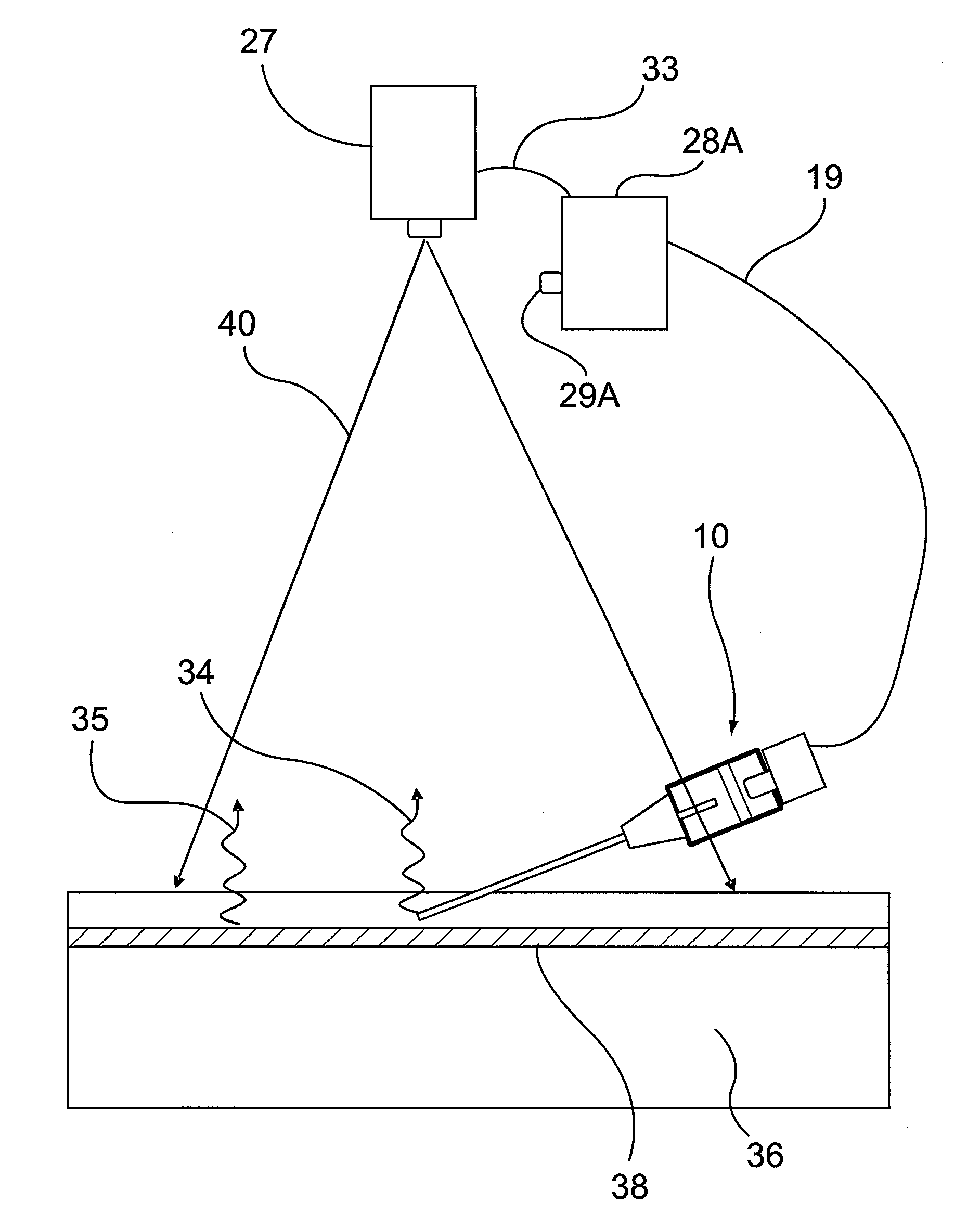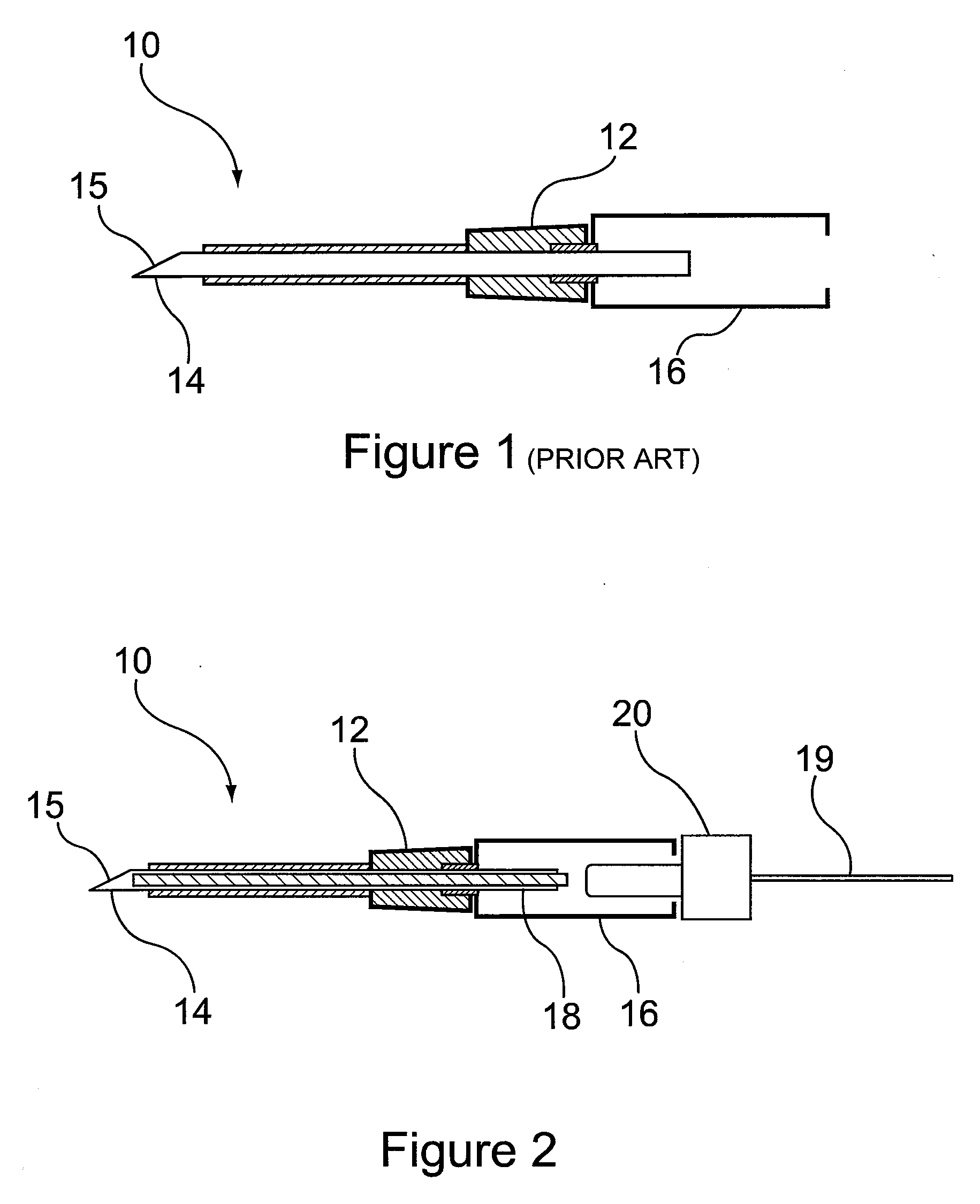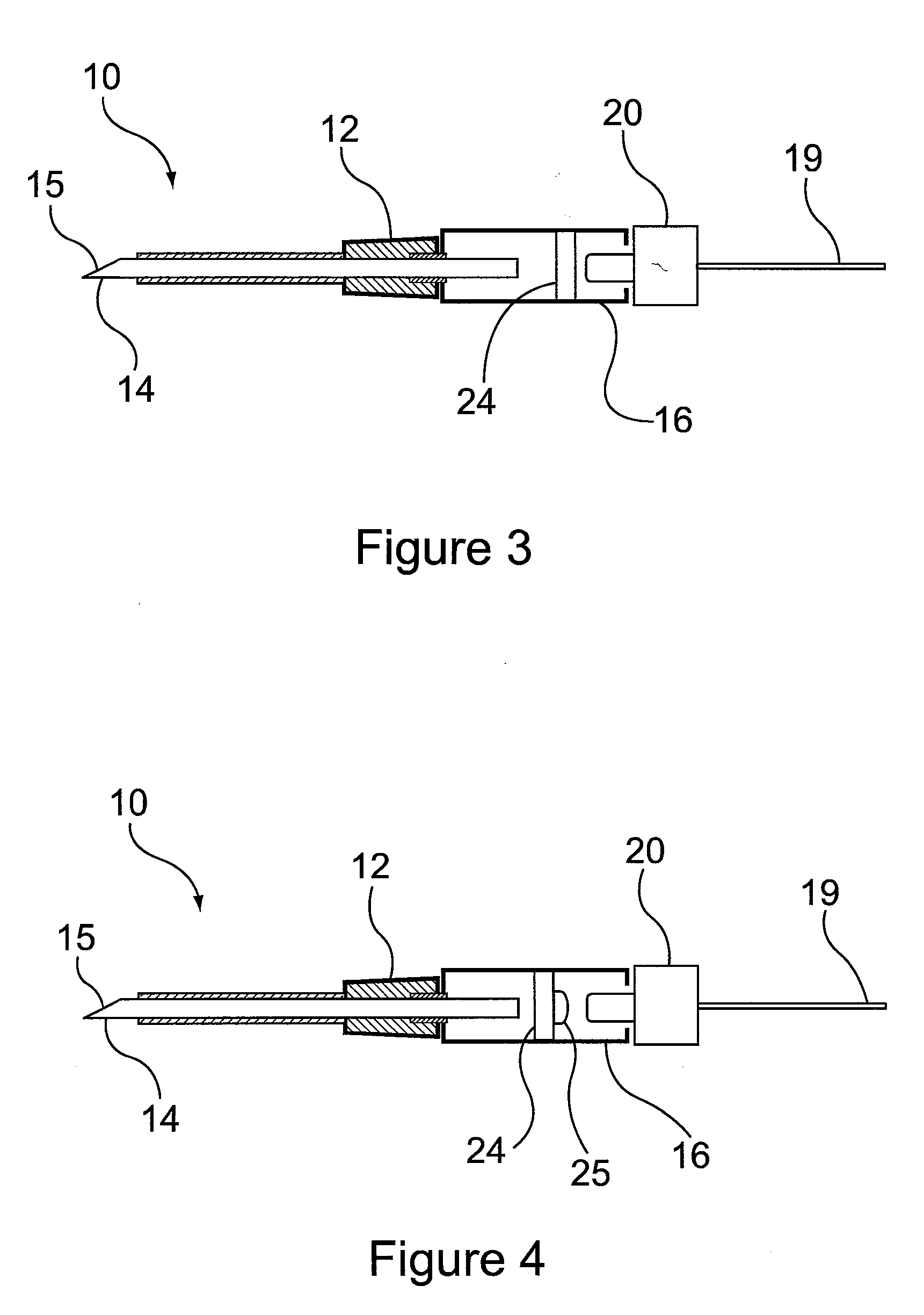Method and apparatus for detection of catheter location for intravenous access
a catheter location and catheter technology, applied in the field of medical imaging, can solve the problems of care costs, real costs associated with iv care, few techniques for assisting nurses and clinicians, etc., and achieve the effect of reducing the light being detected
- Summary
- Abstract
- Description
- Claims
- Application Information
AI Technical Summary
Benefits of technology
Problems solved by technology
Method used
Image
Examples
first embodiment
[0030] as shown in FIG. 2, the IV catheter 10 of FIG. 1 can be illuminated via a fibre optic light guide 18 disposed within the needle 14. The light guide is illuminated from the needle housing 16 and propagates light to the needle tip 15. A source of illumination or illuminator (discussed in greater detail with reference to FIGS. 6 and 7) generates light at a wavelength chosen to be transparent to tissue but readily absorbed by haemoglobin. Wavelengths in the range of 650-1100 nm are suitable. The illuminator can be a laser, LED or other suitable light source, and can be disposed within housing 16 or can be connected to the housing from a remote location via optical fibre 19 and a light source coupler 20. The coupler 20 ensures accurate alignment between the light-generating tip of the optical fibre 19 and the light guide 18. The use of a remote illuminator also eliminates any obtrusion around the catheter, for ease of insertion.
second embodiment
[0031]In a second embodiment, shown in FIG. 3, the hollow needle 14 is used as a light guide such that no fibre 18 is required. The light source coupler 20 mounts directly to the needle housing 16 and self-aligns with the back of the needle 14. Light propagates down the needle shaft and is reflected out at the sharp side of the needle 14.
[0032]A window 24 is molded into the plastic needle housing 16. The purpose of the window 24 is to create a blood flashback chamber that can be used as a visual detector for cannulation while preventing blood from contaminating the light source coupler 20.
third embodiment
[0033]In a third embodiment, illustrated in FIG. 4, a plano-convex lens 25 is provided having a suitable radius to match the fibre numerical aperture output of optical fibre 19 for enhanced optical coupling into the needle 14. The lens 25 can be molded into the optical window 24 as part of the manufacturing process. The lens 25 focuses the diverging light emitted from the optical fibre 19 to a point at the opening in the end of the needle 14. This ensures maximum light coupling and light transmission to the needle tip 15.
[0034]According to a further embodiment, illustrated in FIG. 5, a self-centering mechanism 26 is provided in the walls of the needle housing 16 to ensure the light source coupler 20 self centers to the optical window 24 and lens 25. This can be accomplished using a slight taper to the needle housing walls that matches the light source coupler. In this way, the coupler self centers but can also be “locked” in place by friction. Alternatively, a quarter-turn thread (n...
PUM
 Login to View More
Login to View More Abstract
Description
Claims
Application Information
 Login to View More
Login to View More - R&D
- Intellectual Property
- Life Sciences
- Materials
- Tech Scout
- Unparalleled Data Quality
- Higher Quality Content
- 60% Fewer Hallucinations
Browse by: Latest US Patents, China's latest patents, Technical Efficacy Thesaurus, Application Domain, Technology Topic, Popular Technical Reports.
© 2025 PatSnap. All rights reserved.Legal|Privacy policy|Modern Slavery Act Transparency Statement|Sitemap|About US| Contact US: help@patsnap.com



